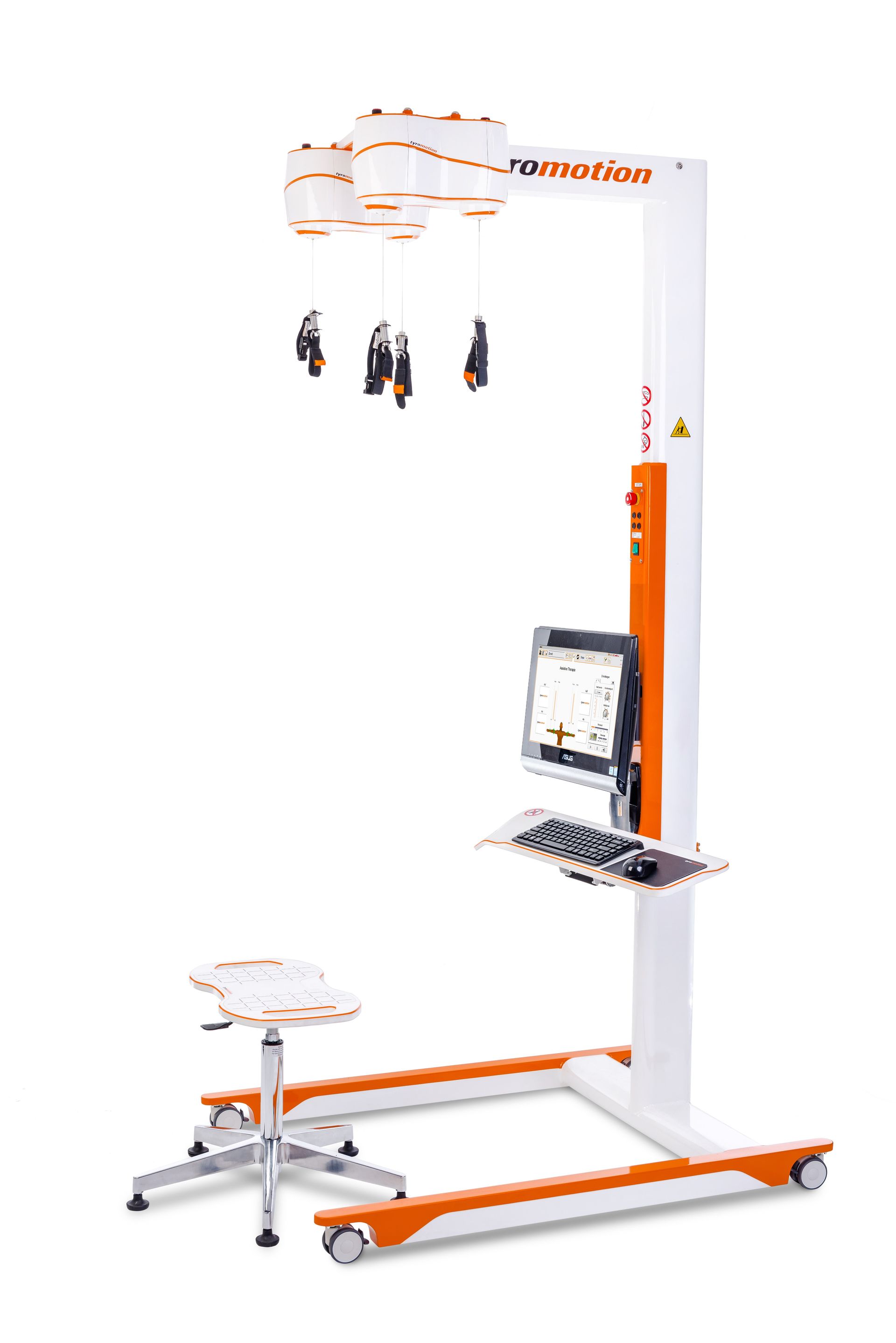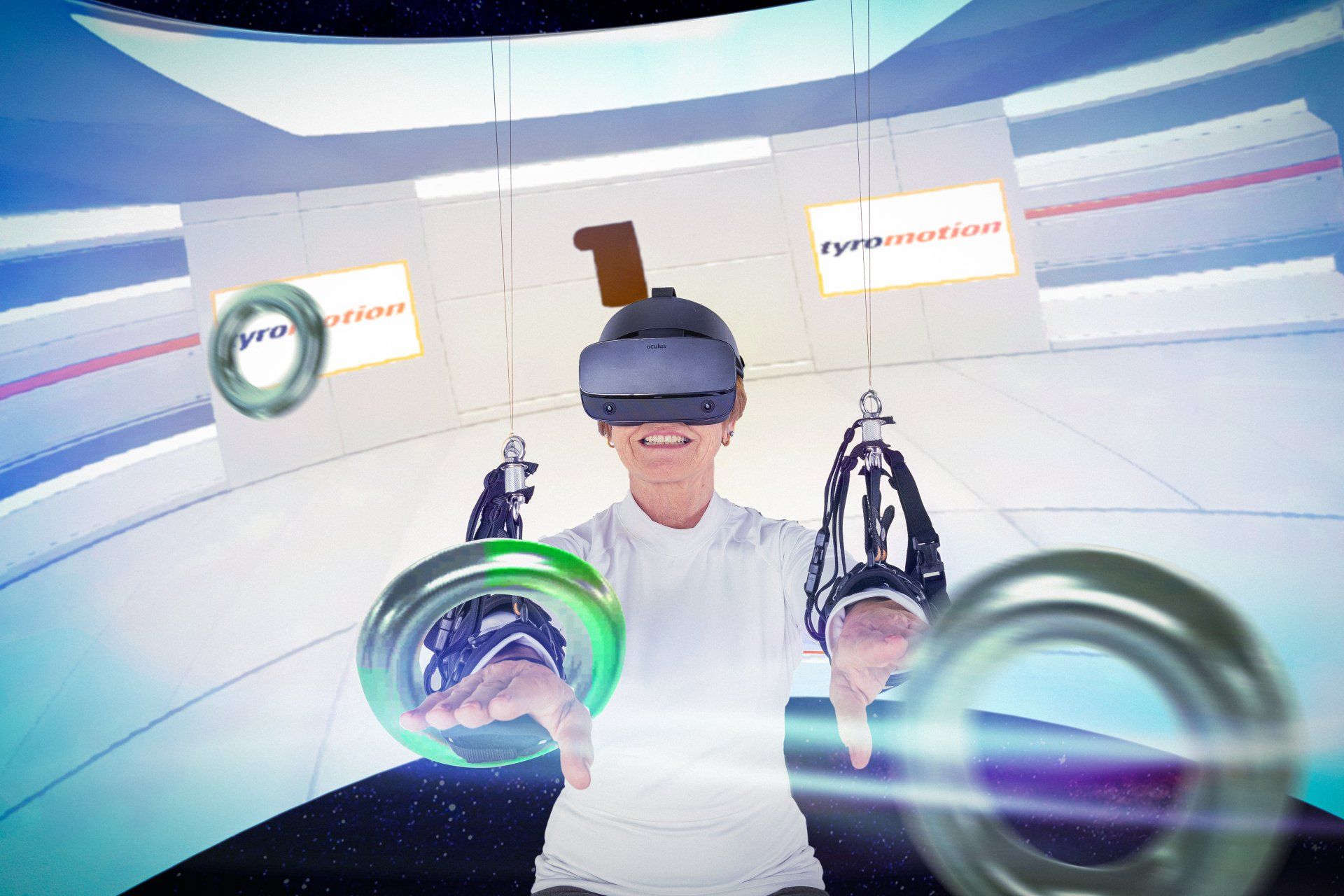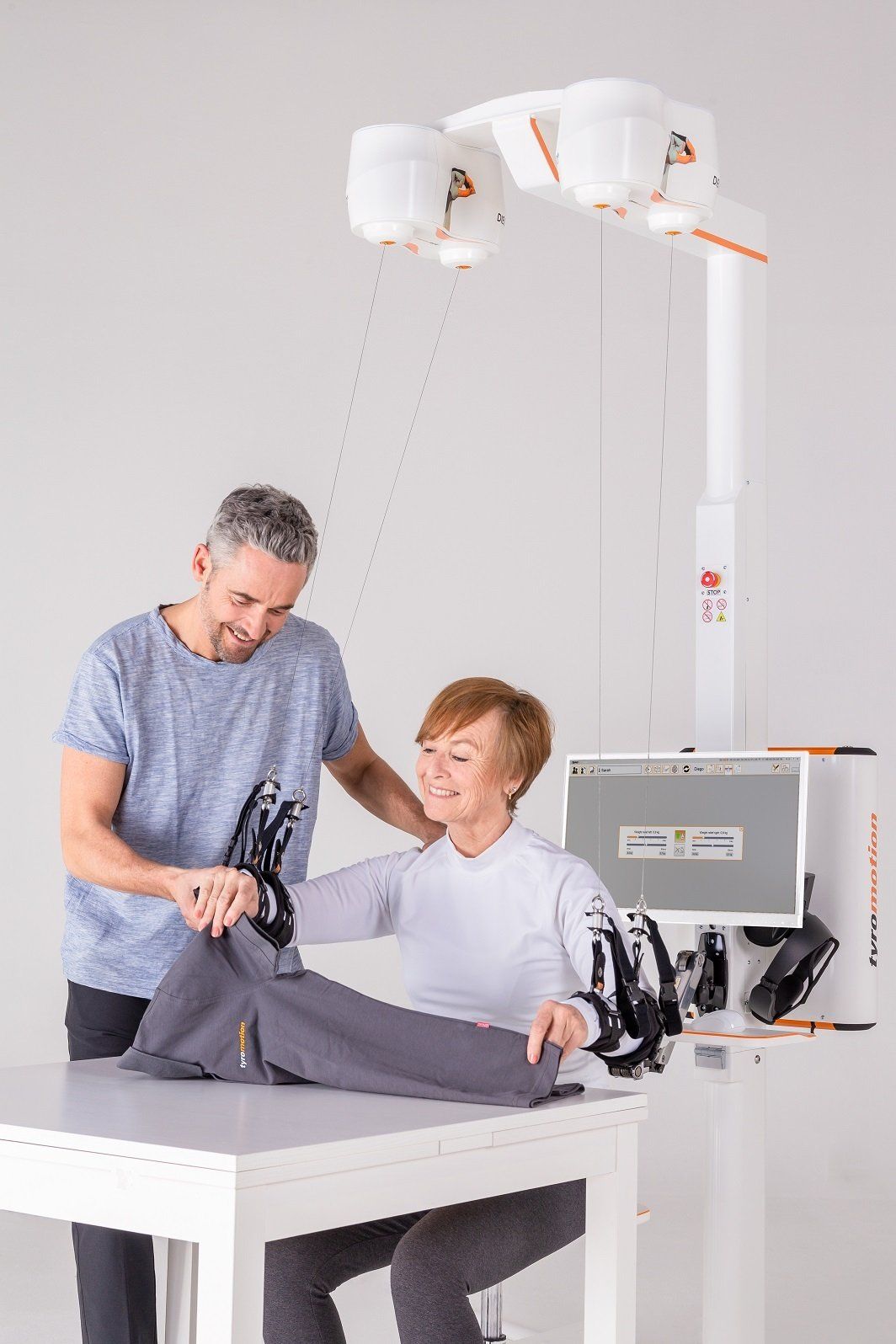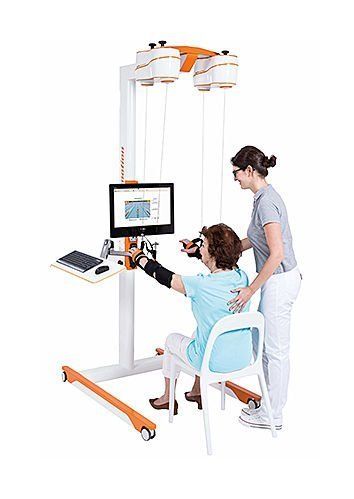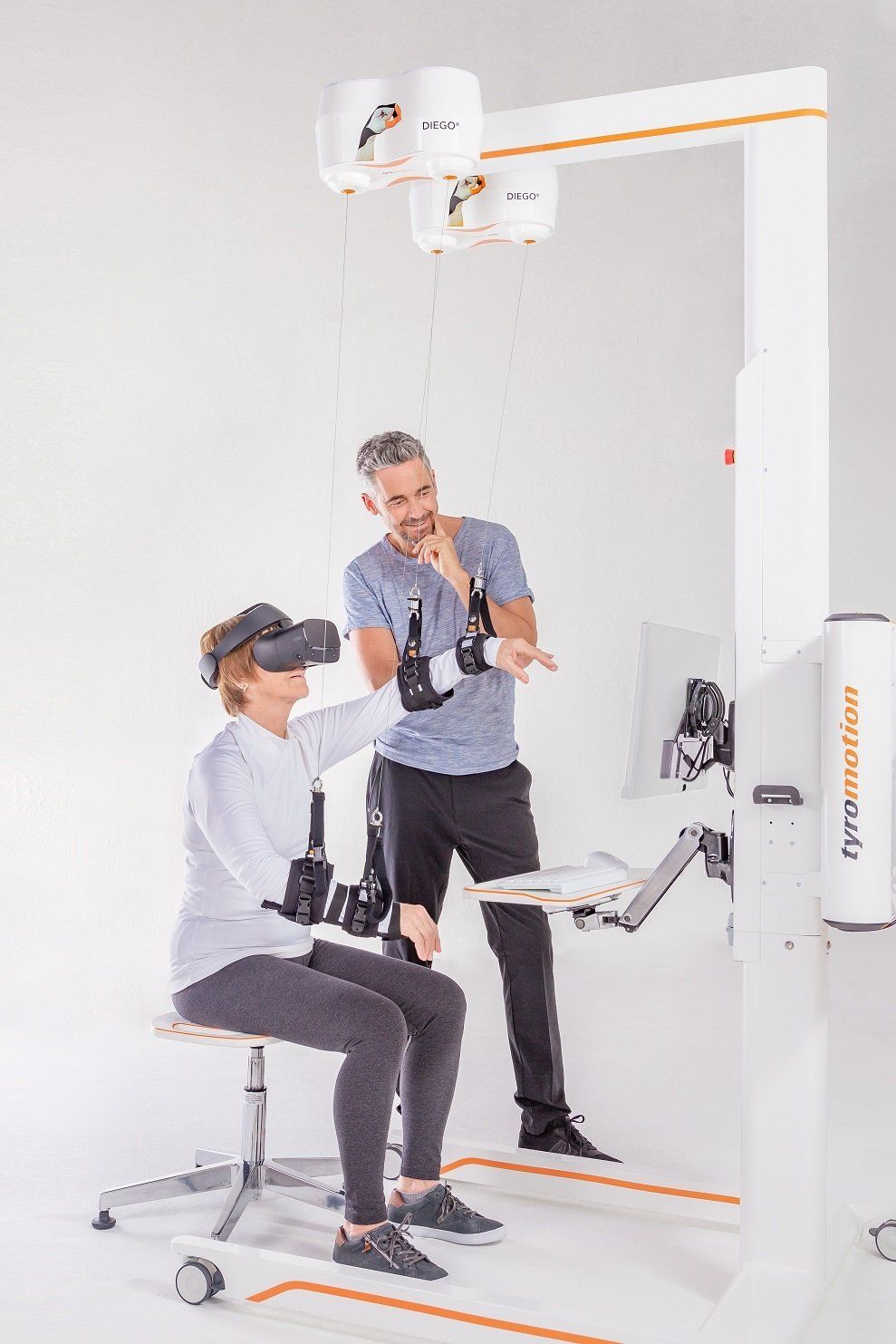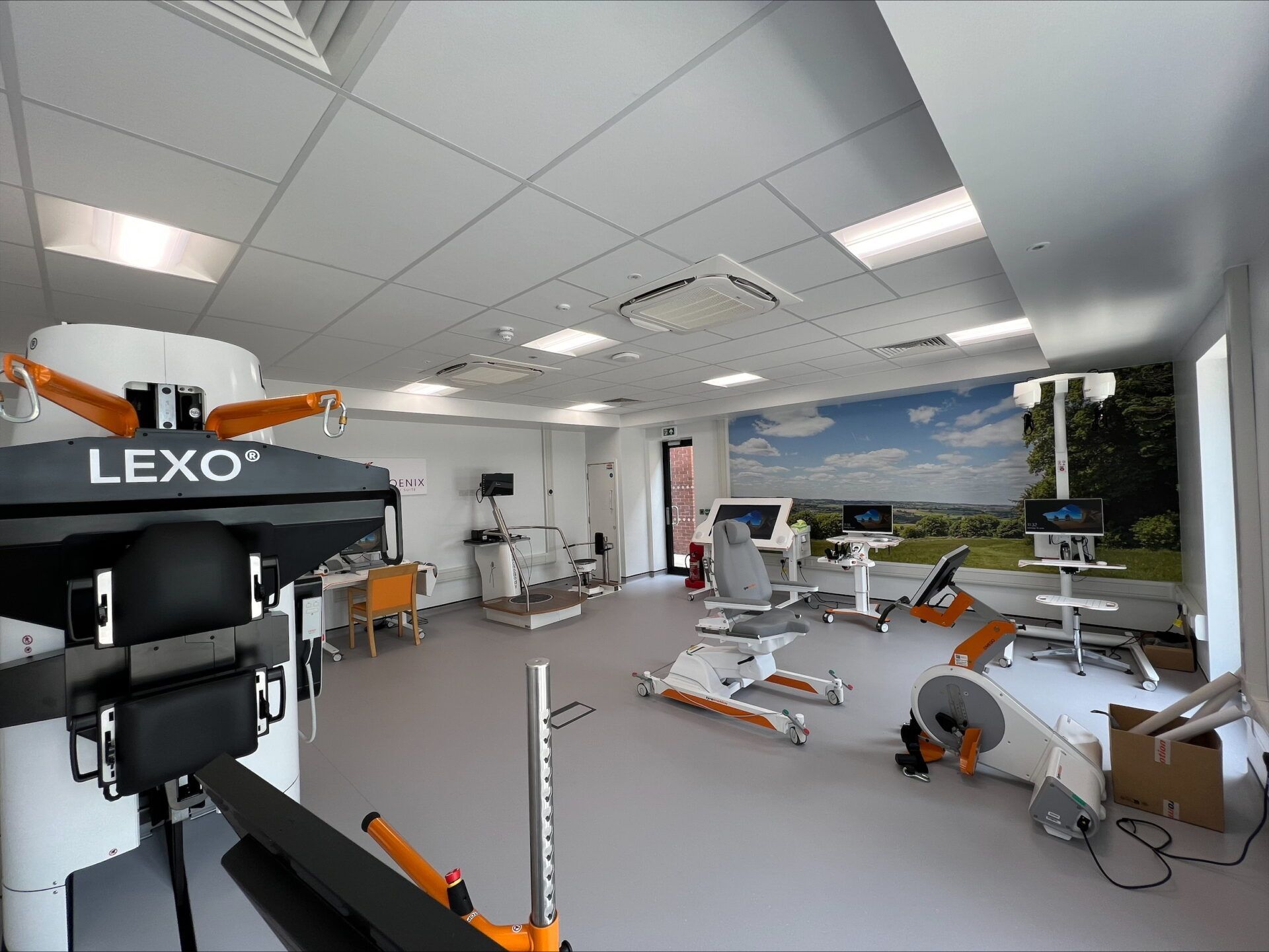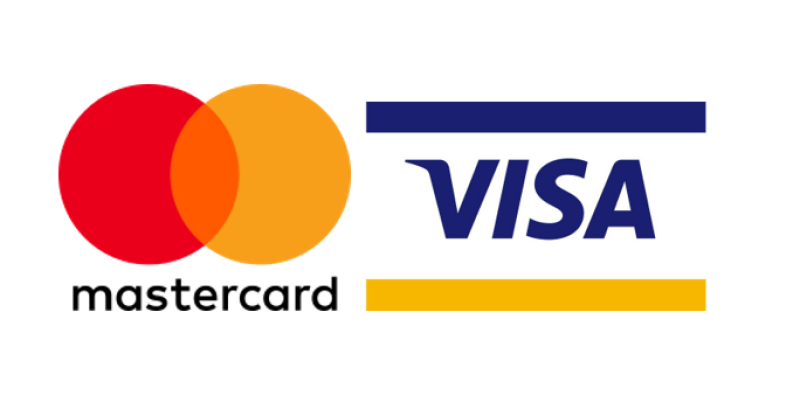Robotic-assisted arm-rehabilitation with DIEGO
DIEGO is the most advanced and most versatile arm-shoulder rehabilitation device worldwide.
Intelligent gravity compensation, robotics and virtual reality facilitate the often difficult training to regain lost arm motor function uni and bilaterally.
Therapy for arms and shoulders
Diego relieves the therapist and the patient of the difficult motion guidance of the arms. Because of its overhead construction, DIEGO is easily accessible from all sides and thus offer space for a qualitative therapy of arm-and shoulder motor function.
With DIEGO, you have room for motion, which is why the arm-shoulder rehabilitation device is particularly suited for task-oriented training with real objects. However, DIEGO doesn’t only offer more room for therapy but also more freedom. The intelligent gravity compensation (IGC) makes heavy arms lighter and allows physiological movement of the arms in all stages of rehabilitation.
Be they passive, assistive, or active applications, the DIEGO can be adapted to the individual needs of each patient. Easily and quickly.
Arm straps allow for a fast and correct attachment to the device. And with the integrated tyroS Software, the setup takes under a minute per patient.
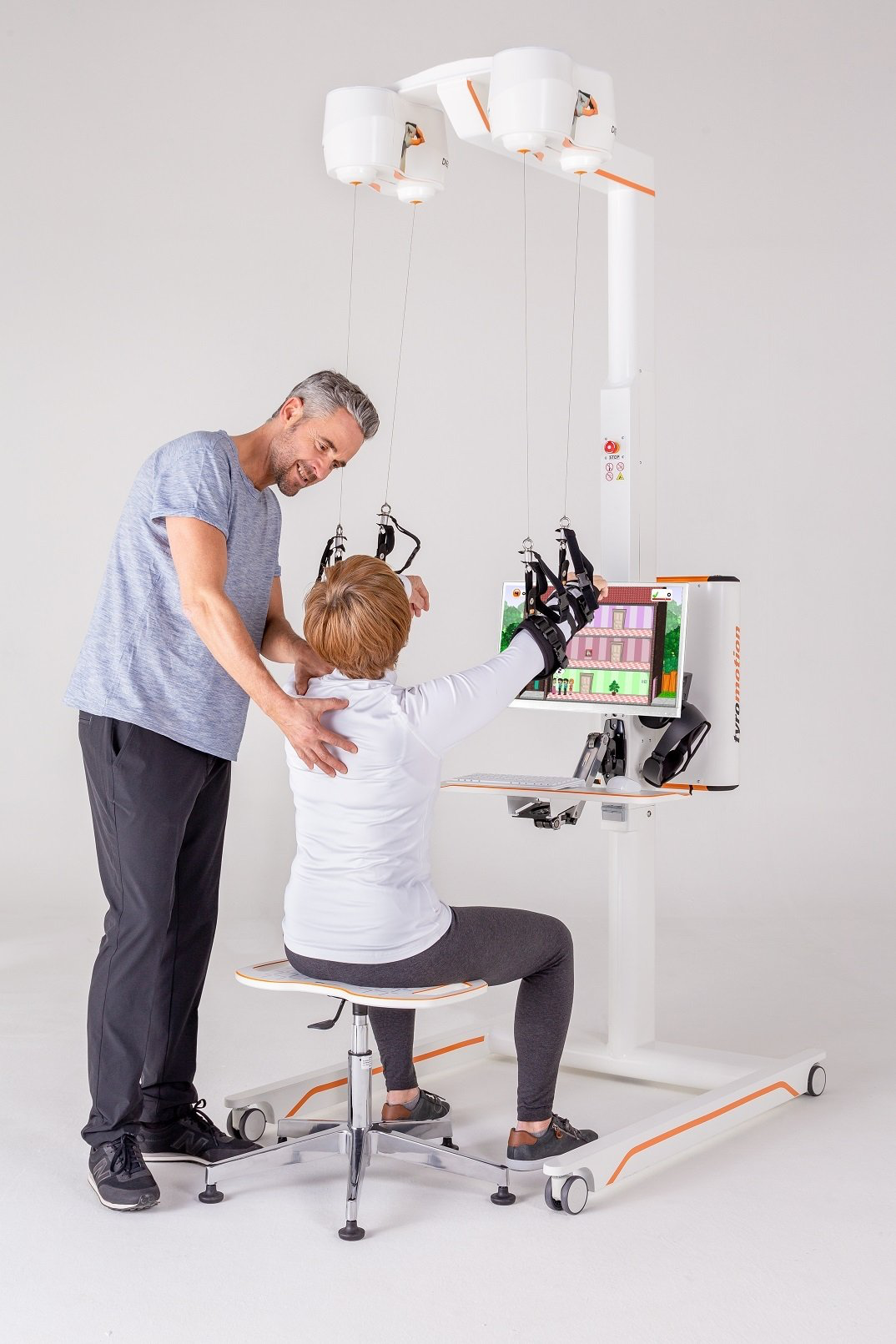
Advantages of Therapy with DIEGO
- Robotic-assisted, intelligent Gravity Compensation (IGC) – for patients with limited motor function of the arm
- Uni- as well as bilateral applications in all phases of arm-rehabilitation
- Fast set-up for a maximum of therapy time thanks to the unique sling system
Evaluation and Therapy
The tyroS Software is part of all Tyromotion devices and makes the DIEGO one of the most multifaceted arm-shoulder-rehabilitation devices currently available.
Therapy with the DIEGO is rich in variety: interactive therapy modules provide audiovisual and haptic feedback; the patient experiences and feels motion in a virtual reality. This is motivating and enables more repetitions, which are so essential for automated movement. In order to keep up the level of motivation, the control settings can be adjusted to the patient. In addition, every therapy module is equipped with a number of different levels of difficulty. Thus, arm-therapy at the patient’s maximum limit of performance is possible throughout all phases of rehabilitation. In order to make therapy achievements visible, the therapy progress is recorded in a clear and easily understandable way and can be recalled any time.
Therapy with DIEGO makes the rehabilitation process more varied, more motivating and more target-oriented.
DIEGO, the intelligent arm-rehabilitation device for patients of all ages. In all phases of arm-rehabilitation.
DIEGO® Facts
- Robotic and sensor based rehabilitation device
- Unilateral and bilateral therapy in one device – no configuration necessary
- Assistive and interactive therapies for the whole arm
- Applicable for adults and children in all rehabilitation phases
- Short setup time of patient to device
- End effector system (hands-on possible)
- Assist-as-needed with intelligent gravity compensation (IGC)
- Enables task oriented training
Functionality
- Training of lost arm-shoulder functionalities in neurological, pediatric, orthopedic and geriatric
impairmentsch - Distal support allows for a proximal initiation of movement
- Active weight relief of the arms, IGC (Intelligent Gravity Compensation) promotes an optimal mobilization of the arms
- Virtual Reality supports cognitive rehabilitation and stimulates neuroplastic changes in the brain
- ROM assessments as well as functional therapies for the upper extremity
- Quick and easy patient setup with arm slings that attach to the arm both unilaterally and bilaterally
- Accessible for both mobile and wheelchair patients
- Two overhead arm units, individually adjustable arm slings, motor controlled ropes
- Sensors capture the arms’ positions as well as the joint angle
DIEGO® in Practice
- Interactive therapeutic games
- Assessments show improvements and rehabilitation progression
- Reporting and documentation saves diagnoses and therapy results
- Enables ideal transfer of what the patient has learned into everyday life
- Quick change between adults and children
- High net therapy time
- Interactive therapies and task oriented training with objects
- Symmetrical and asymmetrical movements as well as cyclical and cooperative sequences of movement

